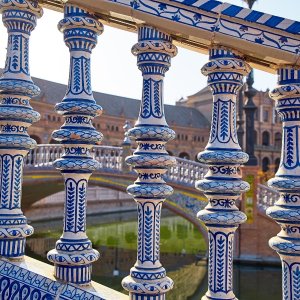Legend has it that, at the beginning of the 14th century, a soldier from the eastern Mediterranean arrived in Sitges with a vine shoot.
It was a variety from Greece called Malvasia, characterized by a small and aromatic white grape with which a sweet, fruity and high alcohol content wine is obtained.
It is also possible that Malvasia reached Sitges through trade. Whatever its true origin, what is certain is that, during the Middle Ages, this grape variety took root in the region and gained a reputation for its quality, becoming a highly appreciated wine among the Catalan nobility and bourgeoisie. It was especially served at the end of celebrations.
Its production was concentrated in small vineyards and was considered an artisanal work. It was made from very ripe grapes that were harvested by hand and aged for a long time in chestnut barrels.
Unfortunately, throughout the 20th century, Sitges Malvasia suffered a significant decline due to several factors. Phylloxera, a plague caused by an insect that devastated European vineyards, also showed no mercy to the Sitges vineyards. Changes in consumption habits and the preference for other types of wine eventually pushed Malvasia to the brink of extinction.
But this is a story with a happy ending, thanks in large part to the Sant Joan Baptista Hospital Foundation, the oldest institution in Sitges. Although its main function was the health care and welfare of the community, the hospital owned vineyards and became a haven for Malvasia.
In recent decades, the Sant Joan Baptista Hospital Foundation has intensified its efforts to promote and protect the Sitges Malvasia. Among the most outstanding initiatives are the replanting of old vineyards and the implementation of sustainable viticulture practices, which have revitalized the production of this emblematic wine.
Visitors can learn more about the history of Malvasia and the hospital at the Sitges Malvasia Interpretation Center (CIM), promoted by the foundation. It is a space conceived as a participatory and sensory museum, where there is no shortage of tastings of the different varieties of wine produced.
At the same time, the Malvasia is returning the favor to the Hospital. All the income collected from the sale of the wine and the visits generated by the Sitges Malvasia Interpretation Center is reinvested in the care of the elderly at the nursing home managed by the Foundation itself. It is difficult to find a better example of sustainable management and circular economy: by preserving an ancient winemaking tradition, they also ensure the continuity of the services that the Foundation offers to the community.
Fortunately, the future of this grape variety no longer depends only on the hospital, as Sitges is making more and more efforts to recover its winemaking traditions.

In July 2021 the visitor center was inaugurated at the Can Milà farmhouse, a medieval building located at the entrance to Sitges. It consists of a surrounding garden that was where the vines used to be planted. When the center opened, Malvasia de Sitges was replanted, in a joint project between the Sant Joan Baptista Foundation and Sitges Tourism, recovering and highlighting the town's winemaking history.
In addition, a sustainable biodiversity project has been created in the visitor center garden; native species such as broom, rosemary, mastic and thyme have been planted to enhance local biodiversity. Various bird feeders and shelters for birds, reptiles, insects and bats have also been installed. The aim is to highlight the cultural and natural value of Sitges, which goes beyond the sea.
Can Milà aims to show visitors that Sitges, in addition to its seafaring past, also has a legacy and a wine heritage that is part of the local culture.
The Responsible Tourism Institute has awarded Sitges the Biosphere Gold distinction. This is awarded after verifying that, in addition to implementing sustainable practices at a territorial level, there is a strong business commitment to being more sustainable.














